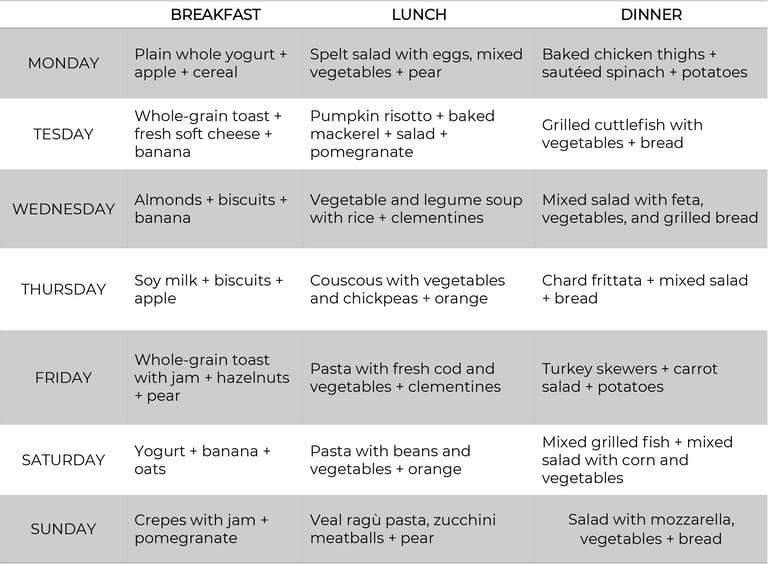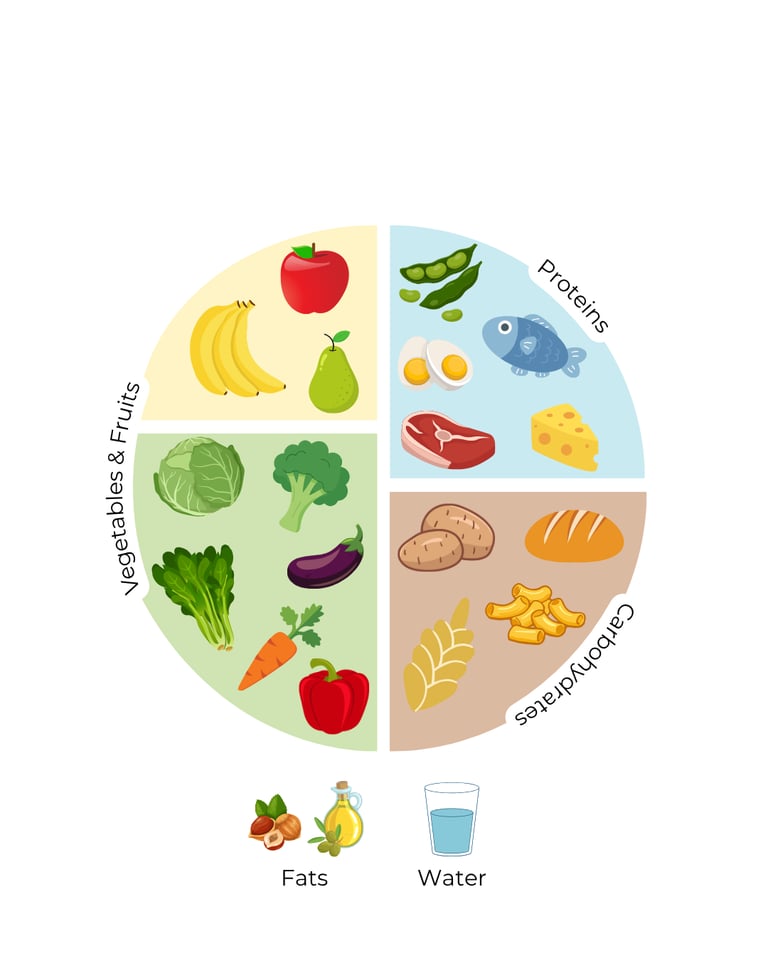Diet: a user's guide. How to combine foods to create a balanced meal.
Fad diets with fancy names, influencers who seem to live on oats and Greek yogurt, TikTok flooded with “fit” recipes, and protein-fortified everything.
Proteins. Proteins everywhere.
We are constantly bombarded with advice and slogans promising to make us slimmer, healthier, and more beautiful. But how much science is actually behind these claims? And how much is just clever marketing?
The internet has given everyone a voice. These days, we’re all experts — in everything from molecular virology to nutritional physiology. But it’s worth remembering that not everyone who writes online is a qualified professional. That’s why it’s useful to go back to basics and clarify, in simple and scientifically sound language, what it really means to follow a balanced diet.
BASIC RULES
Three meals a day are more than enough if you have a regular schedule and don’t exercise intensively (breakfast around 7 a.m., lunch around 1 p.m., dinner around 7 p.m.).
Each meal should include all the macronutrients:
Fiber from vegetables and fruit
Carbohydrates from bread, pasta, rice, other grains, or potatoes
Protein from legumes, fish, meat, eggs, dairy, or nuts
Healthy fats such as extra virgin olive oil, seeds, or nuts
Vitamins and minerals mainly from fruits and vegetables
Water — not a food per se, but essential. Aim for about 2 liters a day.
There are no inherently “fattening” or “slimming” foods — it’s all about portion size and frequency.
A TYPICAL DAY
BREAKFAST:
Complex carbs: whole-grain cereals (like oats or wheat), wholemeal bread, crispbread, rice cakes, plain biscuits, or homemade cake with little sugar.
Proteins (often with fats): whole milk (cow’s or soy), plain whole yogurt, natural kefir, nuts (walnuts, almonds, etc.), fresh cheese, or eggs.
Vitamins, minerals, and fiber: seasonal fruit (ideally with the peel).
A breakfast is balanced when it includes all macronutrients.
No — coffee and a croissant don’t count as a balanced breakfast.
Not even if the croissant is vegan or wholegrain…
But if you add a glass of soy milk and an apple, you’re already doing better. Just watch out for added sugars.
LUNCH AND DINNER:
Carbohydrates: pasta, rice, buckwheat, couscous, barley, millet, wheat, spelt, corn, potatoes, bread, and similar foods.
Proteins:
Meat: 0–3 times a week, favoring white meat and limiting red (beef, pork) and processed meats (cold cuts).
Fish: 3–5 times a week, preferably oily fish.
Eggs: 1–4 times a week.
Cheese: about 2 times a week, preferably fresh varieties.
Legumes: 3–5 times a week.
Nuts (pine nuts, almonds, hazelnuts, walnuts, pistachios) can occasionally replace other protein sources.
Vitamins, minerals, and fiber: seasonal fruits and vegetables.
Fats: extra virgin olive oil, nuts, olives, or avocado.
Many protein sources already contain fats, so using EVO oil to cook or season your dish is generally enough to meet your fat needs.
PORTIONS
The standard serving sizes defined by the Italian LARN (Reference Intake Levels of Nutrients and Energy for the Italian Population) work well for most people. Still, individual variability matters — for example, 80 grams of pasta might be perfect for many, but too much or too little for others.
To avoid overthinking or weighing everything, you can follow the so-called “healthy plate rule.”
Here’s how it works:
50% vegetables and fruit
25% carbohydrates
25% proteins
If you’re still hungry after such a meal, increase all components proportionally, keeping the same balance.
No, you don’t need extra protein — unless you have specific medical or dietary needs.
In that case, only a qualified professional — a doctor, nutrition biologist, or dietitian — can give you proper advice or prescribe a tailored meal plan.
Not a personal trainer, and definitely not an influencer.
As long as you stick to the healthy plate rule, you won’t risk deficiencies or excesses.
Need a bit of help getting started? Below you’ll find a sample weekly menu that shows how to rotate protein sources.
It’s not a strict prescription, just a flexible model you can adapt to your taste and routine.
Enjoy your meal!
RESOURCES
- https://www.health.harvard.edu/staying-healthy/healthy-eating-plate
- https://sinu.it/wp-content/uploads/2025/01/Standard-Quantitativi-delle-Porzioni.pdf
COVER IMAGE CREDIT: Mizar F. Oliva, Ph.D.




